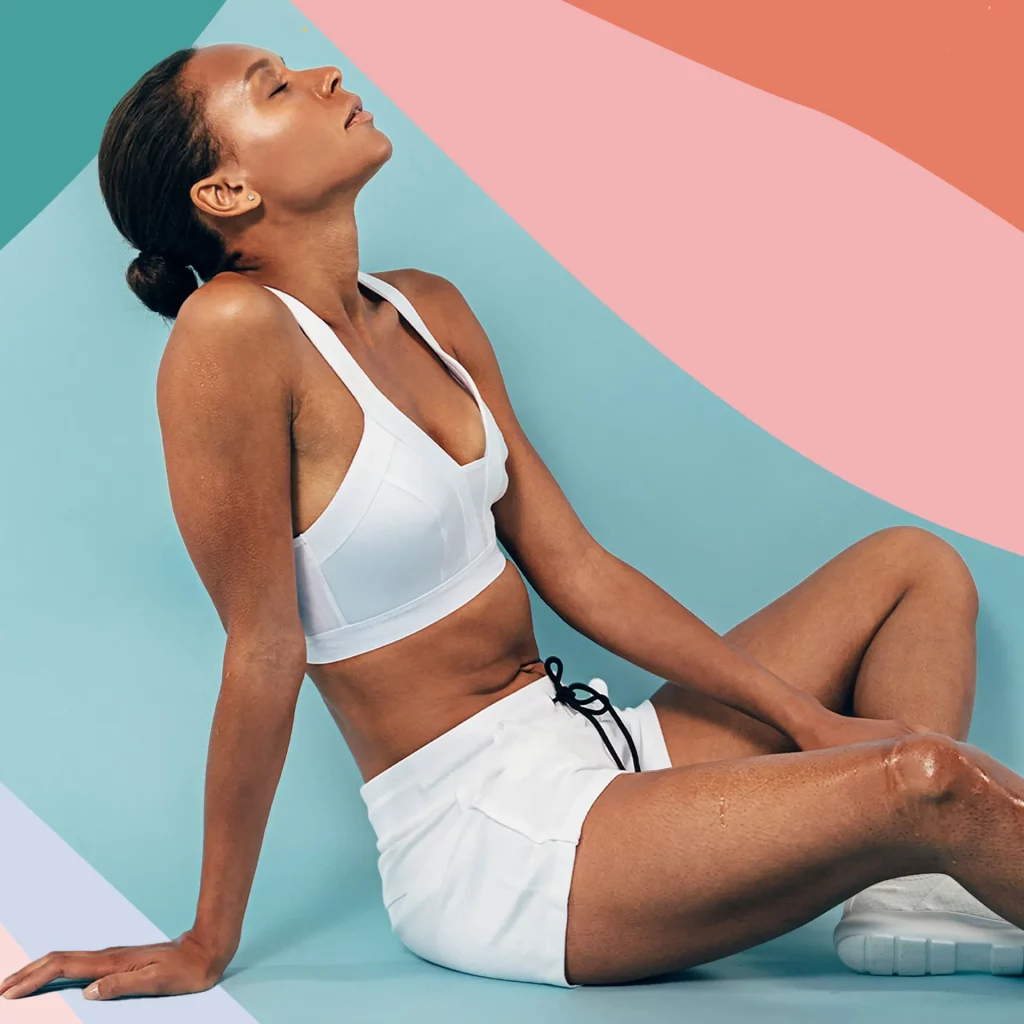Sweating is never a pleasant experience, and when it comes to underboob sweat, managing it becomes a whole new challenge. The discomfort of underboob sweat goes beyond mere inconvenience—it can lead to significant skin issues like itching, redness, and irritation. In severe cases, it may even result in a yeast rash known as candidiasis, exacerbated by the increased moisture in the underboob area.
To help you navigate and conquer underboob sweat, we reached out to experts who shared their tried-and-true tips for effective management.
1/ Use Deodorant
When combating underboob sweat, start with the basics—plain old deodorant. Opt for specific deodorants, powders, or creams designed to prevent underboob sweat. The ideal deodorant type is a cream or a soft solid, steering clear of gels. Clinical strength deodorants, particularly those with 20% aluminum chloride, are recommended for optimal results.
2/ Wear Breathable Bras
What lies beneath your clothes matters, especially when it’s the first thing touching your skin. “There are certainly lightweight anti-sweat bras that can make a difference,” says our expert. Look for wireless bras with moisture-wicking material, mesh panels for enhanced airflow, or antibacterial features to ensure you stay fresh even after sweating.
3/ Choose Cotton Shirts
Opt for clothing made from breathable fabrics like cotton rather than synthetic materials. Cotton’s breathability allows for quicker drying when you sweat, preventing moisture from lingering as it might with synthetics. Additionally, moisture trapped inside clothes can lead to skin irritation, making cotton a more skin-friendly choice.
4/ Apply Talc-Free Baby Powder
Combat underboob sweat by applying talc-free baby powder before putting on your bra and shirt. Choose a powder that absorbs sweat and excess moisture without the use of talc, which can pose respiratory risks for some individuals. Luckily, there are plenty of talc-free baby powders available on the market.
5/ Avoid Oils
While you may have heard of using oils like argan oil to prevent underboob sweat, our experts advise against it. “Oils and moisture will only create a breeding ground for yeast or candida, leading to possible irritation and increased redness.” Furthermore, certain oils, such as argan oil, may cause contact dermatitis, resulting in rash, redness, and itchiness.
6/ See Your Doctor
If home remedies prove ineffective, it might be time to consult with your doctor. “When skin touches skin, it can block sweat from evaporating, leading to increased moisture.” While this is common, persistent issues, excessive sweating, development of a rash, or an unusual odor in your sweat may indicate underlying hormonal issues, warranting a visit to your doctor.
Underboob sweat is a common woe, but armed with these expert tips, you can effectively manage it. Simple antiperspirants can prevent underboob sweating, providing a safe and practical solution endorsed by dermatologists.
Changing your approach to bras and shirts by opting for breathable fabrics and styles can further enhance your comfort. And if you find yourself needing more than at-home fixes, a visit to your doctor will provide a more comprehensive understanding of any underlying issues contributing to excessive underboob sweating. Embrace these strategies, and say goodbye to underboob sweat woes for good.

